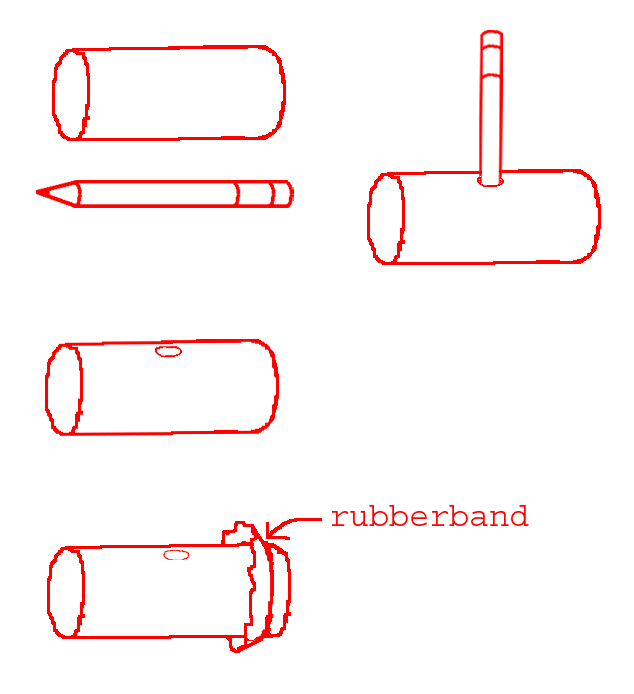What Is a Kazoo?
History of the Kazoo
Join AAK
Kazoo Design, Construction, &Maintenance
Pictures
Links
Kazoo Science 1 --The Basic Tube Mirliton
In order to design mirlitons that
work the way you want them to, it is
important
to understand how they work and how changing different aspects effects
the
sound and other properties.
Anyone can do these experiments. (Younger children may need help with cutting and hole poking.)
In addition to discovering information specifically about kazoos, it teaches scientific method.
I would enjoy hearing about your experiments. You can email me at motleyjust@aol.com.
Anyone can do these experiments. (Younger children may need help with cutting and hole poking.)
In addition to discovering information specifically about kazoos, it teaches scientific method.
I would enjoy hearing about your experiments. You can email me at motleyjust@aol.com.
Basic tube mirliton
Materials
kazoo body--Cardboard tube from
toilet paper rolls.
membrane material-- plastic grocery bag.
rubberband
a pencil to poke holes.
Use a pencil to poke a hole in the side of a toilet paper tube, equal distance from either end.
Cover one end with 4" square of plastic grocery bag, and hold in place with a rubberband. Membrane material should be snug, but not stretched too tightly. This is your control model. Variations will be studied by making instruments like this, but with one thing changed.
membrane material-- plastic grocery bag.
rubberband
a pencil to poke holes.
Use a pencil to poke a hole in the side of a toilet paper tube, equal distance from either end.
Cover one end with 4" square of plastic grocery bag, and hold in place with a rubberband. Membrane material should be snug, but not stretched too tightly. This is your control model. Variations will be studied by making instruments like this, but with one thing changed.

Experiments
Playing methods
The first several experiments are
done with just the basic control
instrument.
As you do each of the following make notes on your observations including, but not limited to the differences between each.
As you do each of the following make notes on your observations including, but not limited to the differences between each.
Mouth hole--Hum into:
a) the open end hole. The
most sound comes from the membrane end.
b) the covered end hole. The most sound comes from the open end.
c) the side hole. Sound comes from the open end and from the membrane end. I don't know which has the most sound. I think it may depend on which the side hole is closer to.
What part of the instrument does the sound come from in each case?
b) the covered end hole. The most sound comes from the open end.
c) the side hole. Sound comes from the open end and from the membrane end. I don't know which has the most sound. I think it may depend on which the side hole is closer to.
What part of the instrument does the sound come from in each case?
Type of humm--
Syllable--use various syllables
when you hum and note the sounds and
differences
Suggested hums
a) doooo
b) hmmmm
c) hoooooo
d) rrrrrrrrrrrrr
e) brrrrrrrrr\
f) eeeeeeee
g) ahhhhhh
others you can think of.
h)
i)
j)
Suggested hums
a) doooo
b) hmmmm
c) hoooooo
d) rrrrrrrrrrrrr
e) brrrrrrrrr\
f) eeeeeeee
g) ahhhhhh
others you can think of.
h)
i)
j)
Pitch
The pitch of the notes are
determined by the pitch (how high or low)
you
hum. To some extent the range (how high and low notes it can produce)
is
determined by the vocal range of the player. Some instruments may
produce
high notes better than others; and some may produce low notes
better.
Find how high and low of sounds you can make with your
instrument.
How do they differ from notes produced by people with higher or lower
voices.